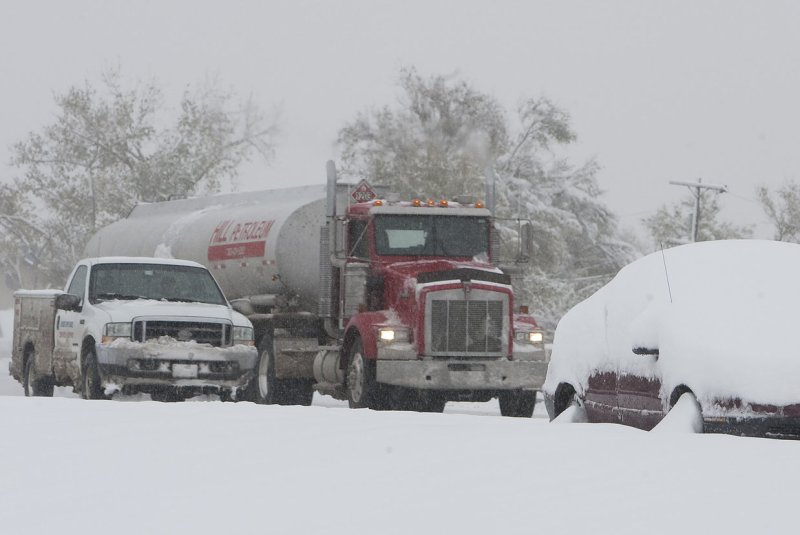Emissions generated per driver in the United States got a little worse, according to the University of Michigan. File photo by Gary C. Caskey/UPI |
License Photo
Nov. 10 (UPI) -- The average emissions emitted per individual driver in the United States is getting worse, a report Friday from the University of Michigan found.
The Transportation Resource Institute at the university said its eco-driving index, which measures the amount of greenhouse gas emissions per individual driver, is getting worse.
"The EDI indicates that the average new-vehicle driver produced 18 percent lower emissions in August 2017 than in October 2007, but 4 percent higher emissions than the record low reached in November 2013," the emailed report read.
According to the International Energy Agency, about a quarter of the total global greenhouse gas emissions come from the transportation sector.
U.S. refineries switch late in the year to a winter-blend of gasoline, which is less expensive to make because more steps are needed with the summer-blend to prevent excessive evaporation. As a result, summer blends improve gas mileage.
The Michigan study, meanwhile, said average fuel economy is lower, but it was basing its metrics on the window-sticker value of new vehicles sold in the United States last month. From September to October, the average mile-per-gallon was lower by 0.1.
"The value for October is up 5.1 mpg since October 2007, but down 0.3 mpg from the peak of 25.5 mpg reached in August 2014," the report read.
Meanwhile, a separate report from the institute, co-authored by Brandon Schoettle and Michael Sivak, found both battery-powered and plug-in hybrids are at the point where they're capable of meeting the daily travel needs of most U.S. drivers. Recent improvements in range and charging times, their report read, has led to wider acceptance and reduced "range anxiety" already.















